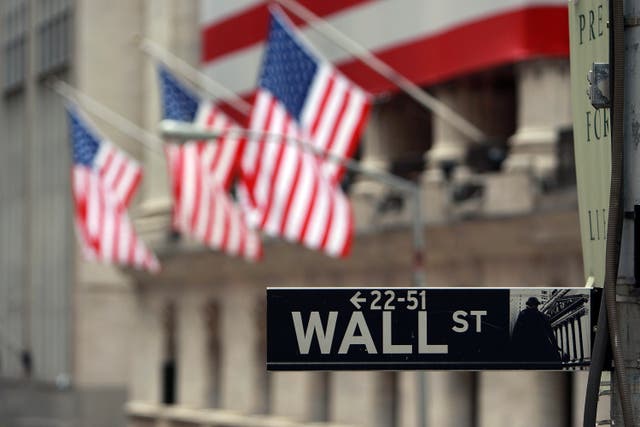

The Securities and Exchange Commission, or SEC, is an independent federal regulatory agency tasked with protecting investors and capital, overseeing the stock market and proposing and enforcing federal securities laws. Prior to the SEC’s creation, oversight of the trade in stocks, bonds and other securities was virtually nonexistent, which led to widespread fraud, insider trading and other abuses. The SEC was created in 1934 as one of President Franklin Roosevelt’s New Deal programs to help fight the devastating economic effects of the Great Depression and prevent any future market calamities.
After World War I, during the “Roaring 20s,” there was an unprecedented economic boom, during which prosperity, consumerism, overproduction and debt increased. Hoping to strike it rich, people invested in the stock market and often bought stocks on margin at huge risk without federal oversight.
But on October 29, 1929 — "Black Tuesday" — the stock market crashed, along with public confidence as investors and banks lost billions of dollars in just one day. The stock market crash caused nearly 5,000 banks to close and led to bankruptcies, rampant unemployment, wage cuts and homelessness which triggered the Great Depression.
Stock Market Crash of 1929To help determine the cause of the Great Depression and prevent a future stock market crash, the U.S. Senate Banking Committee held hearings in 1932, known as the Pecora hearings, named for the committee’s lead counsel, Ferdinand Pecora. The hearings determined that numerous financial institutions had misled investors, acted irresponsibly and participated in widespread insider trading.
Prior to the creation of the SEC, so-called Blue Sky Laws were on the books at the state level to help regulate securities sales and prevent fraud; however, they were mostly ineffective. After the Pecora hearings, Congress passed the Securities Act of 1933, which required registration of most securities sales in the United States.
The Securities Act aimed to help prevent securities fraud and stated that investors must receive truthful financial data about public securities for sale. It also gave the Federal Trade Commission the power to block securities sales.
The Pecora hearings also led to the passing of the Glass-Steagall Act in June 1933, which helped to restore the economy and public confidence by separating investment banking from commercial banking.
The Glass-Steagall Act created the Federal Deposit Insurance Corporation (FDIC) to oversee banks, protect consumers’ bank deposits and manage consumer complaints.
On June 6, 1934, President Franklin D. Roosevelt signed the Securities Exchange Act, which created the SEC. This Act gave the SEC extensive power to regulate the securities industry, including the New York Stock Exchange. It also allowed them to bring civil charges against individuals and companies who violated securities laws.
President Roosevelt appointed Wall Street investor and businessman Joseph P. Kennedy — father of future president John F. Kennedy — as the SEC’s first chairman.
Were financial institutions victims—or culprits?
Wall Street as a Wooden Wall • 1652: During the Anglo‑Dutch Wars, hostilities between England and the Netherlands spilled over into North America. The Dutch settlers of Manhattan Island, called New Amsterdam at the time, feared England was planning to attack and constructed a wooden wall as defense. Costing the settlement 5,000 guilders and constructed […]
To keep utility costs down and reduce the hold a handful of utility empires had on the industry, Congress also passed the Public Utility Holding Company Act (PUHCA) of 1935. It required interstate utility holding companies to register with the SEC and provide operational and financial information.
PUHCA also gave the SEC the power to break up utility companies with pyramid-type structures in which a few investors controlled numerous subsidiaries, often leading to high costs, unfair practices and poor service.
The Glass-Steagall Act and the creation of the SEC and PUHCA helped restore investor confidence after the Great Depression by reducing deceitful trading, ensuring the public received all pertinent information about investment risks and limiting the practice of buying stocks on margin.
The SEC put investors’ needs over those of brokers, traders and corporations, which helped bring people back to the stock market, especially after World War II boosted the economy.
Five bipartisan commissioners are appointed by the U.S. president to oversee the five divisions of the SEC, including:
The SEC has developed a searchable online database known as EDGAR (Electronic Data Gathering, Analysis and Retrieval), which companies are required to use to file reports, forms and other information required by the SEC.
In 2017, the SEC announced that the EDGAR database had been hacked one year earlier, and private information was accessed that may have been used for illegal trading. EDGAR was also hacked in 2015, and false information about Avon Products was posted on the database.
Since its inception, the SEC has helped bring stability to an ever-changing market by protecting consumers, maintaining fair markets and ensuring companies are transparent with their financial transactions.
Later acts of Congress kept it relevant, including the Securities Acts Amendments of 1975 and the Dodd-Frank Act (aka the Dodd-Frank Wall Street Reform and Consumer Protection Act) of 2010.
The SEC has worked closely with the U.S. Department of Justice to prosecute individuals and corporations for securities fraud at all levels. Some defendants have been high-profile investors, including businesswoman Martha Stewart, Kenneth Lay (of failed Enron Corporation), NFL quarterback Fran Tarkenton, fraudulent stock trader Ivan Boesky and disgraced investor Bernie Madoff.
A Brief History of the Securities and Exchange Commission. Fox Business.
The Laws that Govern the Securities Industry. U.S. Securities and Exchange Commission.
Timeline. Securities and Exchange Commission Historical Society.
What We Do. U.S. Securities and Exchange Commission.
“SEC reveals it was hacked, information may have been used for illegal stock trades.” September 20, 2017. The Washington Post.
HISTORY.com works with a wide range of writers and editors to create accurate and informative content. All articles are regularly reviewed and updated by the HISTORY.com team. Articles with the “HISTORY.com Editors” byline have been written or edited by the HISTORY.com editors, including Amanda Onion, Missy Sullivan, Matt Mullen and Christian Zapata.